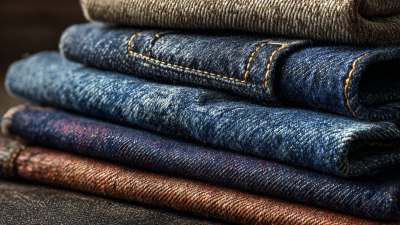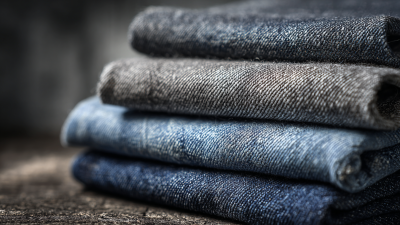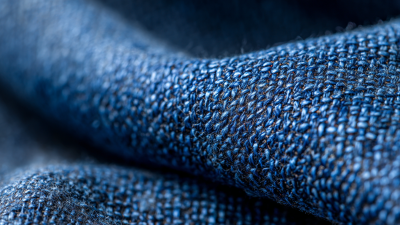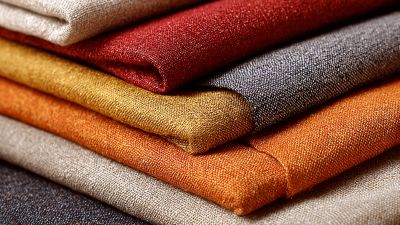In the ever-evolving landscape of sustainable fashion, the rise of Recycled Denim Fabric stands out as one of the most innovative and impactful developments of 2023. As consumers become increasingly aware of the environmental impact of their clothing choices, the fashion industry is responding with more eco-friendly materials. Among these, recycled denim not only minimizes waste but also offers remarkable durability and style. Industry expert Dr. Emily Carter, a leading sustainable fashion advocate, emphasizes the significance of this movement, stating, "Recycled Denim Fabric is not just a trend; it represents a shift towards a more responsible and circular economy in the fashion industry."
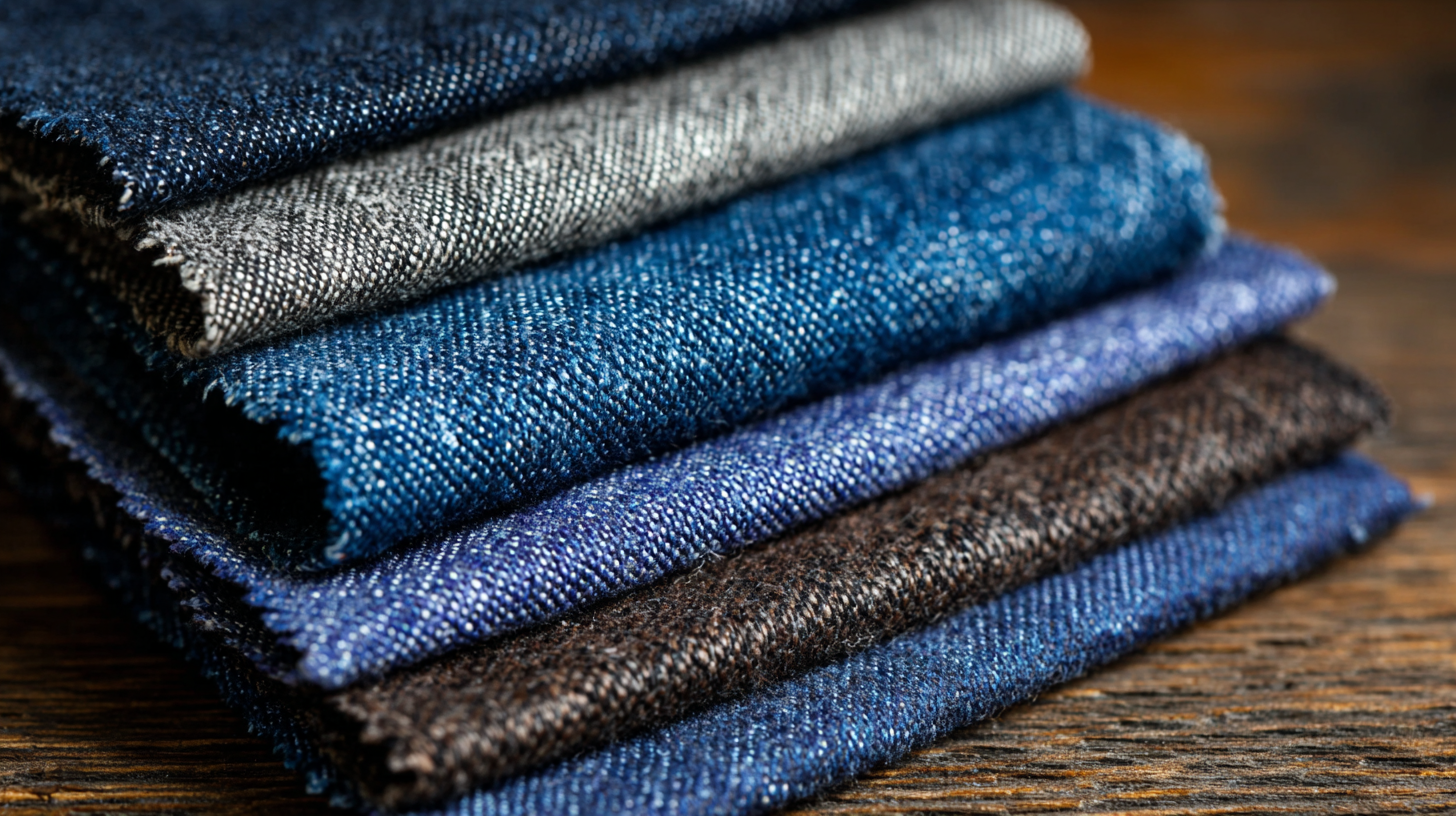
The benefits of Recycled Denim Fabric are extensive, impacting not only the ecological footprint of garment production but also enhancing the fashion aesthetic. By repurposing old denim, brands can create unique, high-quality fabrics that preserve the essence of traditional denim while engraving a fresh narrative of sustainability. This innovative fabric champions the reduction of landfill waste and lowers the consumption of water and energy, making it an essential component in the transition to a more sustainable future.
As we delve into the top ten benefits of Recycled Denim Fabric for sustainable fashion in 2023, it is crucial to recognize the role this material plays in shaping a circular fashion industry and promoting responsible consumerism. With every piece of recycled denim, we take another step toward a more sustainable and ethically-conscious wardrobe.
The environmental impact of fast fashion, particularly in the denim sector, is increasingly alarming. Fast fashion jeans are responsible for significant carbon emissions, equivalent to driving 6.4 miles after just being worn. In contrast, opting for second-hand options or recycled denim can reduce these emissions by an impressive 90%. This highlights the crucial need for sustainable fashion practices, particularly as consumers become more aware of their choices' ecological footprint.
Recycled denim fabric is becoming a key player in the movement towards sustainable fashion. By repurposing existing materials, the industry not only conserves resources but also mitigates the harmful effects associated with conventional denim production. Traditional dyeing processes, notorious for their toxic environmental impact, are being revolutionized by innovative solutions that eliminate the need for harsh chemicals. The shift towards using natural fibers and enhancing the recyclability of denim enhances the sustainability of the sector. Such developments signify a promising future where the denim industry can transition from being one of the most polluting sectors to a more environmentally friendly one.

The processing of recycled denim fabric has evolved dramatically, showcasing innovative techniques that enhance its sustainability in fashion. One approach is mechanical recycling, where old denim is shredded and transformed into new fibers without the use of chemicals. This method significantly reduces waste and energy consumption while retaining the fabric's unique characteristics, allowing for the creation of high-quality sustainable garments that appeal to eco-conscious consumers.
Another method gaining traction is enzymatic recycling. This cutting-edge technique utilizes enzymes to break down the cellulose in cotton fibers, facilitating the regeneration of denim materials. By minimizing the ecological footprint, enzymatic recycling not only conserves resources but also promotes the use of non-toxic chemicals, thereby enhancing the overall sustainability of the fashion industry. As brands adopt these innovative processing methods, they are able to offer stylish, durable, and environmentally friendly options that reflect the growing demand for sustainable fashion solutions.
Recycling denim fabric presents significant economic advantages for the fashion industry, especially as it aligns with the growing emphasis on a circular economy. The denim sector is projected to face challenges due to impending tariffs and green legislation by 2025, making the need for sustainable practices more urgent. By adopting recycling processes, companies can not only reduce production costs but also minimize waste, proving to be more profitable in the long run. A report indicates that recycled denim can significantly cut down both water usage and energy consumption in manufacturing, creating a more efficient production line that contributes to overall cost savings.
Moreover, local denim recycling hubs are emerging as a viable economic model, especially in countries like Bangladesh. This shift not only fosters local job creation but also establishes a sustainable supply chain, where textile waste is transformed into valuable resources. According to recent findings, recycling textile waste can reduce greenhouse gas emissions by up to 70%, presenting a compelling case for financial investment in sustainable practices. The transition towards recycling denim is not just an environmentally responsible choice, but also a strategic economic move that can drive growth within the fashion sector while meeting consumer demand for sustainable products.
In recent years, consumer awareness surrounding sustainable fashion has significantly increased, particularly in relation to recycled denim products. A report by the Global Fashion Agenda highlights that 66% of consumers are willing to pay more for sustainable products, showing a clear shift toward environmentally conscious purchasing behaviors. This growing demand has led brands to innovate and incorporate recycled materials into their collections, with denim being a frontrunner due to its widespread popularity and substantial environmental impact.
The denim industry, notorious for its resource-intensive production processes, has seen a transformation thanks to recycled denim fabric. According to a study published by the Ellen MacArthur Foundation, recycling one ton of denim fabric can save up to 7,500 liters of water—equivalent to the water needed to grow cotton for more than 1,000 pairs of jeans. Furthermore, it is estimated that using recycled fabric can reduce greenhouse gas emissions by up to 50% compared to conventional denim production methods. As brands respond to consumer preferences by adopting these sustainable practices, the market for recycled denim products continues to expand, driving a pivotal shift in the fashion industry towards a more circular economy.
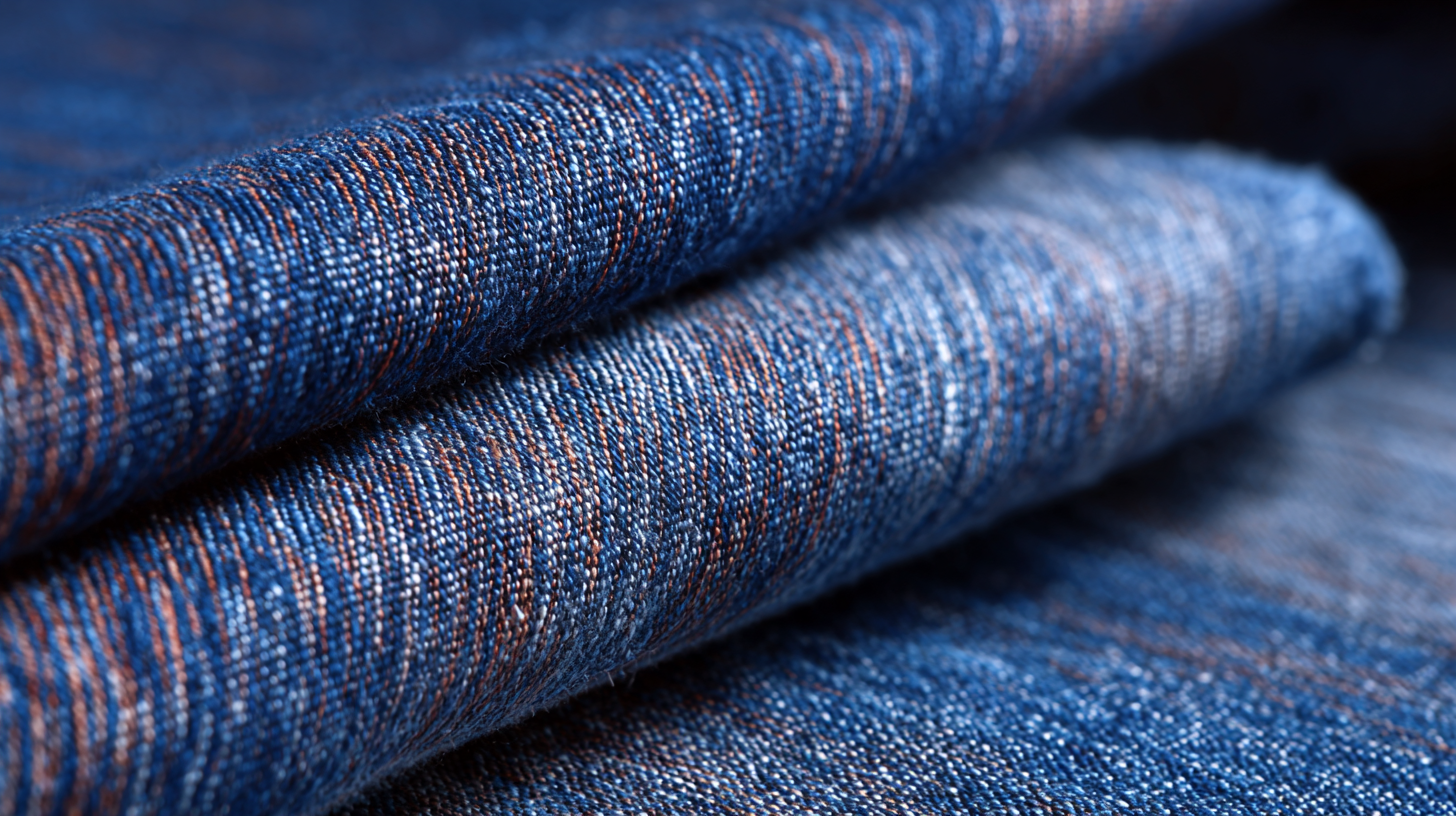
The future of recycled denim is poised for significant growth in sustainable fashion, driven by an increasing awareness of environmental impact and consumer demand for eco-friendly products. According to a report by the Global Fashion Agenda, nearly 70% of consumers are now prioritizing sustainable options in their purchasing decisions. This shift is prompting brands to innovate with recycled denim, integrating it into their collections. Notably, the denim industry alone is responsible for over 1 billion pairs of jeans produced every year, which makes recycling denim an essential step in reducing waste.
Recent trends indicate a surge in technological advancements that enhance the processes of recycling denim. For instance, the use of enzyme technology can break down cotton fibers, allowing brands to regenerate high-quality denim from post-consumer waste. A study by the Ellen MacArthur Foundation estimates that if clothing recycling methodologies are improved, we could potentially recycle up to 50% of all jeans produced, significantly decreasing water consumption and chemical use in production. This not only signifies a stride towards sustainable fashion but also highlights the transformative potential of recycled denim in shaping the future of the fashion industry.
| Benefit | Description | Impact on Sustainability |
|---|---|---|
| Reduced Water Usage | Recycled denim reduces the need for water-intensive cotton farming. | Conserves water resources. |
| Lower Energy Consumption | The recycling process uses less energy compared to producing new denim. | Reduces greenhouse gas emissions. |
| Waste Reduction | Utilizing post-consumer denim reduces landfill waste. | Minimizes environmental pollution. |
| Versatile Styles | Recycled denim can be crafted into various fashionable designs. | Promotes circular fashion. |
| Chemical Reduction | Less toxic chemicals are involved in recycling processes. | Improves soil and water quality. |
| Consumer Awareness | Increased awareness about sustainable practices. | Encourages eco-friendly consumer choices. |
| Support for Local Economies | Recycling programs often support local businesses. | Boosts local economies. |
| Innovation in Materials | Encourages development of new sustainable fabrics from recycled sources. | Promotes material innovation. |
| Economic Benefits | Recycling can be cost-effective in the long run. | Improves overall economic sustainability. |
| Connection to Community | Recycling initiatives foster community teamwork. | Strengthens community bonds. |
